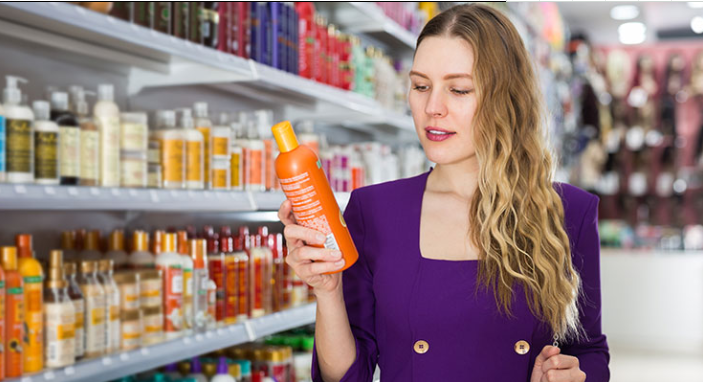
2022-03-10 16:46:34
Beauty Industry Outlook for 2022, NPD Group Reports
2022-03-10 16:46:34

While some challenges remained, there were many happy surprises in 2021. In the U.S. prestige beauty industry, for example, the results of the past year undid the damage of the year prior.
Although 2020 revenue losses brought our industry back to 2015 spending levels, the comeback in 2021 brought most beauty categories right back to where they were before the pandemic began.
There was double-digit revenue growth in 2021 across the U.S. retail landscape tracked by The NPD Group, which includes 15 different industries.
Part of the reason retail sales stayed strong, despite a shift in spending toward experiences, is because consumers continued to spend more across a broader range of categories—the tech, toys, and home industries remained positive in 2021, while apparel, footwear, and beauty made a comeback.
These shifts in consumer spending reflected a blending of behaviors in our pandemic lifestyle. In the beauty industry, we saw continued growth from scented candles, facial exfoliators, hair care products, perfumes, and other pandemic winners. At the same time, facial moisturizers, serums, makeup foundation, and other large categories made their comebacks.
Prestige Beauty Will Gain Momentum in 2022 & Beyond
All of this growth provides the prestige beauty industry with positive momentum, as we enter 2022 and beyond.NPD is forecasting that the industry will grow over the next several years, although performance will differ by category and not all categories will remain positive. Many factors will contribute to this momentum, including shifts in retail, price promotion, and category dynamics.
Retailers Partner Up
One of the biggest changes to impact our industry this past year was the rollout of retail collaborations between Ulta-Target and Sephora-Kohl’s.As these partnerships came to life, industry buzz focused on the distribution of prestige brands in traditionally non-prestige channels.
However, while it might have been the case 10 years ago, distribution or price no longer defines what “prestige” means.
These partnerships may feel like they’re breaking barriers, but the barriers have been broken before. In Shoppers Drug Mart in Canada, for example, Chanel and Dior beauty products are sold one aisle over from socks and paper towels, and consumers are unfazed.
There is reason to feel confident that such channel blending can enjoy the same success in the U.S. And given that Target and Kohl’s are mass retailers with a larger and broader consumer base than niche beauty specialty stores, such partnerships are a clear and convenient win for consumers.
Ecommerce Is Still On the Rise
Another retail shift is playing out in channel dynamics. The strong growth in online shopping during the pandemic caused the e-commerce channel to grow in importance across every beauty category.However, that growth is now slowing down. While the share of online spending is an average of 10 share points lower than it was in 2020, it is anywhere from 7 to 15 share points higher than in 2019.
Take a Cue from Hair Care & Fragrance
While many industries are training consumers to pay full price again, price promotion continues to grow across most categories in the beauty industry. The one exception is the hair category, where promotion has been slowing down in both the brick-and-mortar and e-commerce channels.The benefits of less promotions are clear, as the hair category has been posting one of the strongest growth rates in our industry. A category like makeup—which has the highest levels of price promotion and is struggling the most to recover to pre-pandemic levels—can take a page from the hair market’s best practices.
Every beauty category can learn from the outstanding performance of fragrances over the past year. This category registered double-digit growth against both 2020 and 2019, as consumers looked to treat themselves. The beauty industry must continue to seek ways to harness that sentiment to provide a halo effect across its other categories.
The Makeup-Skincare Sales Pattern
Despite an atypical decade so far, the cyclical sales pattern between the makeup and skincare categories appears to be continuing. Every four to five years one performs better than the other and then it switches.While there has never been a pandemic in the middle of these cycles, it appears to have had no impact at all: Makeup is expected to finish 2021 with stronger performance than skincare, which is right on time to continue the pattern we’ve observed over the past 15 years.
What does that mean for skincare in both the short and long term? Brands in this space must find ways to grow while navigating what might be a rockier road ahead.
The path ahead holds some uncertainties, but it’s because of this uncertainty that our industry has many opportunities.
Recognize the 'Changed Beauty Consumer'—& Find New Ways to Bring Her Joy
The beauty industry is unique, in that it brings joy to consumers by helping them become more self-confident. This unique benefit is what keeps our industry relevant and important in the minds of our consumers.Their environment and lifestyle may have been altered, but their engagement with beauty remains.
The industry success stories will be the companies that recognize the opportunities of a changed consumer and continue to find new ways to bring her joy.
LinkedIn




